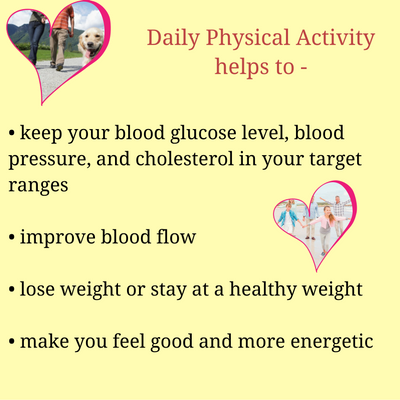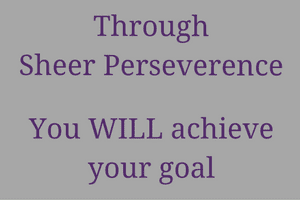This article is designed for readers who are starting out exercising rather than the physically fit who undertake more intense physical activity
There is unquestionable proof that people living with all types of diabetes benefit from being physically active

The most difficult thing with exercise is Getting Started but it is quite simple really – just start walking. You can walk anywhere — at work, home, or school. Anyone can do it – pregnant women, overweight people, people who suffer from joint pain, people with high blood pressure, and the elderly. You can catch up with friends and family while exercising at the same time.

To burn 500 calories a day, you need to walk 10,000 steps a day.
A typical sedentary person walks about 1,000 to 3,000 steps a day. With a little focus and determination, it’s easy to bump that number up to 10,000.
- One mile = 2,000 steps = 20 minutes walking
- five miles = 10,000 steps.
- burning 500 calories per day = 1lb weight loss per week
Tips to help you reach 10,000 steps
- Use a step counter
A step counter is a device that counts the number of steps you take. It records each time the hips move up and down. You can use a pedometer watch or you may find an APP (application) on your mobile phone. Aim to check it a few times each day to see your progress. Aiming to reach that 10,000 number or the promise of 500 calories might motivate you to take a walk during your lunch break or an after-dinner stroll.
- Add 300 steps every day.
Don’t start walking 10,000 steps right away. Just like any other exercise routine, start moderately then gradually increase your intensity. Aim to add at least 300 steps every day. Keeping records of your daily steps will also help you improve; keep a journal in which you log your daily step totals.
- Commit to walking.
Walking 10,000 steps every day is not easy. You have to put in a lot of effort and push yourself. Unless you stay consistent and keep progressing, you won’t benefit from walking. Try to turn it into a habit by designating certain times of the day for walking. After a month or so you will yourself doing it automatically without think and eventually, if you don’t do it, you may find that you miss it!
- Walk up and down hills.
Walking on hills burns more calories. If you live in a hilly place, take advantage of the terrain. Regularly walking up and down hills will stretch and strengthen leg muscles. Walking up stairs also burns more calories.

- Set reminders.
People are busier than ever and it’s easy to forget about your walking goals. Set a reminder on your work calendar or your mobile phone that encourages you to walk a few laps around the office every hour. Set an alarm on your phone that urges you to go for a walk before or after you eat dinner.
- Walk at high intensity.
The faster you walk the more calories you’ll burn. You should be able to hear yourself breathe faster as you walk. Increase the pace if you are breathing normally. Swing your hands as you walk. Time yourself and aim to beat your time.
- It’s the small things that add up to make a big difference!
Here are some other easy ways to sneak in a few extra steps every day:
- Get off the bus/train one stop beyond where you live and walk home.
- Park far from the office, post office, and supermarket then walk.
- Walk kids to school or to the bus stop.
- Use the stairs instead of the elevator in shopping centres
- Go for a walk with a friend or walk the dog.
- Walk at lunch-time even if it just around the block.
- Top up your water glass at the water cooler so that your regularly leave your desk.
- Ideally interrupt sitting every 20 minutes especially the work desk and the couch in front of the TV
- Have your walking gear in the boot of the car and take a walk before going in home after a long day in the office
- Go for a walk instead of watching TV or scrolling through your Facebook timeline.
- Use different walking routes to avoid monotony.


